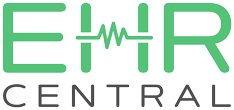Reducing Burnout: How Smart EHR Design Helps Physicians
Physician burnout has become a pressing issue in modern healthcare. Long hours, administrative burdens, and inefficient electronic health record (EHR) systems often contribute to stress and reduced job satisfaction. But with thoughtful design,

EHRs can evolve from being a source of frustration into a tool that empowers clinicians and improves care delivery.
- Streamlined Workflows for Less Cognitive Load
Traditional EHRs often require excessive clicks and redundant data entry. Smart EHR design focuses on intuitive navigation, customizable dashboards, and automation of routine tasks, allowing physicians to focus on patients instead of paperwork. Features like auto-populated fields and voice-to-text documentation can save valuable time during busy shifts.
- Personalized Interfaces for Different Roles
Not all users need the same data at the same time. Role-based customization ensures that physicians, nurses, and administrative staff each see the information relevant to them. By minimizing information overload, EHR systems can reduce cognitive fatigue and enhance efficiency.
- Enhanced Interoperability and Data Access
Smart EHRs integrate seamlessly with labs, imaging centers, and pharmacies, ensuring that physicians have access to complete patient histories without switching between platforms. This connected ecosystem eliminates duplication of work and supports faster, better-informed clinical decisions.
- Built-In Clinical Decision Support
Modern EHRs leverage AI and analytics to provide real-time alerts, predictive insights, and evidence-based recommendations. These features reduce the mental strain of managing complex cases and improve diagnostic accuracy, helping clinicians feel more confident in their decisions.
- Mobile & Voice-Enabled Access
By incorporating mobile-friendly and voice-command functionalities, smart EHRs let physicians update records or retrieve data on the go. This flexibility not only improves workflow but also allows providers to maintain work-life balance by minimizing after-hours charting.
- Continuous User Feedback & Improvement
The best EHR designs evolve through ongoing user feedback. Involving physicians in usability testing and continuous optimization ensures that systems adapt to their real-world challenges, reducing frustration and fostering trust in technology.
Conclusion
Smart EHR design isn’t just about aesthetics or speed, it’s about creating a supportive digital environment that respects clinicians’ time, enhances their focus, and ultimately restores their connection with patients. When technology works for physicians, not against them, burnout declines and care quality rises.





